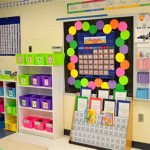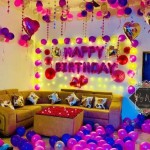How to Decorate a Hall for a Party: A Comprehensive Guide
Decorating a hall for a party requires careful planning and execution to create an atmosphere that aligns with the event's theme and purpose. The goal is to transform a potentially generic space into a welcoming and engaging environment for guests. This process involves considering various elements, including the overall aesthetic, the budget, the size of the hall, and the type of event being hosted. A well-decorated hall enhances the overall experience and contributes significantly to the party's success.
Before commencing the decoration process, a thorough assessment of the hall is crucial. This evaluation should encompass the hall's dimensions, existing features (such as lighting, wall color, and architectural details), and any limitations that might affect the decoration options. Understanding these aspects will allow for more informed decisions regarding the layout, color scheme, and placement of decorations.
The following sections provide detailed guidance on key aspects of hall decoration, focusing on strategies that optimize visual appeal and functionality while adhering to practical considerations.
1. Defining the Theme and Color Palette
The foundation of any successful hall decoration lies in selecting a cohesive theme and color palette. The theme provides a unifying concept that guides all subsequent decoration choices, ensuring a consistent and visually appealing result. The color palette, in turn, reinforces the theme and sets the overall mood of the event.
Consider the nature of the event when choosing a theme. A formal gala may call for an elegant and sophisticated theme, perhaps incorporating elements of classic Hollywood or vintage glamour. A children's birthday party, on the other hand, would benefit from a playful and colorful theme featuring popular characters or activities. A corporate event might require a more professional and understated theme, emphasizing the company's brand and values.
Once the theme is established, selecting a complementary color palette is the next step. The color palette should consist of two to three primary colors and one or two accent colors. Consider the psychological impact of different colors. For instance, warm colors like red and orange can create a sense of energy and excitement, while cool colors like blue and green can promote relaxation and tranquility. Neutral colors, such as white, gray, and beige, provide a versatile backdrop that allows other colors to stand out.
When choosing a color palette, take into account the existing colors in the hall. If the walls are painted in a bold color, it may be necessary to select decorations that complement or contrast with that color. Avoid using too many conflicting colors, as this can create a visually chaotic and overwhelming effect.
The chosen theme and color palette should be consistently applied to all aspects of the hall decoration, including the table settings, balloons, banners, lighting, and floral arrangements. This consistency will create a unified and harmonious atmosphere that enhances the overall experience for guests.
2. Optimizing Space and Layout
The layout of the hall plays a critical role in determining the flow of traffic and the overall functionality of the space. Careful consideration should be given to the arrangement of tables, seating, and other elements to ensure that guests can move freely and comfortably throughout the hall.
Begin by assessing the available space and identifying any potential obstacles, such as pillars, electrical outlets, or emergency exits. These factors will influence the placement of furniture and decorations. Consider the type of event being hosted and the activities that will take place. For a sit-down dinner, sufficient space should be allocated for tables and chairs. For a dance party, a designated dance floor area is essential.
Utilize different types of seating arrangements to create visual interest and accommodate various guest preferences. Mix round tables with rectangular tables to add variety. Incorporate lounge areas with comfortable sofas and chairs to provide guests with a place to relax and socialize. Consider the use of high-top tables to encourage mingling and movement.
Strategic placement of decorations can also help to optimize space. Use tall decorations, such as floral arrangements or balloon columns, to draw the eye upward and create a sense of height. Place smaller decorations, such as centerpieces or candles, on tables to add detail and visual interest. Avoid overcrowding the space with too many decorations, as this can make the hall feel cluttered and uncomfortable.
Pay attention to the flow of traffic throughout the hall. Ensure that there are clear pathways for guests to move between different areas, such as the entrance, the bar, the buffet, and the dance floor. Avoid placing obstacles in these pathways, as this can create bottlenecks and make it difficult for guests to navigate the space.
Consider the use of dividers or screens to create separate zones within the hall. This can be particularly useful for large halls where it is desirable to create more intimate spaces. Dividers can be used to separate the dining area from the dance floor, or to create a quiet lounge area away from the main activity.
3. Incorporating Lighting and Ambiance
Lighting is a crucial element in hall decoration, as it can significantly impact the mood and atmosphere of the event. Effective lighting can enhance the visual appeal of the decorations, highlight architectural features, and create a specific ambiance that aligns with the theme of the party.
Begin by assessing the existing lighting in the hall. Consider the type of fixtures, the intensity of the light, and the color temperature. Natural light can be a valuable asset, but it may need to be supplemented with artificial lighting, especially for evening events. General overhead lighting provides a base level of illumination, but it is often too harsh and unflattering for a party atmosphere.
Incorporate a variety of lighting techniques to create depth and visual interest. Uplighting, which involves placing lights at the base of walls or columns to shine upward, can create a dramatic and elegant effect. Downlighting, which involves using spotlights or recessed lights to focus light on specific areas, can highlight architectural features or decorations. Accent lighting, which involves using small lamps or candles to add a warm and intimate glow, can create a cozy and inviting atmosphere.
Consider the use of colored lighting to enhance the theme of the party. Colored LED lights can be used to create a wide range of effects, from subtle washes of color to dynamic and vibrant displays. For example, blue lighting can create a cool and calming atmosphere, while red lighting can create a sense of energy and excitement. Avoid using overly bright or harsh colors, as this can be overwhelming and distracting.
Dimmable lighting is a valuable asset for creating the right ambiance. Dimmers allow you to adjust the intensity of the light to suit the mood of the event. For example, you can dim the lights during dinner to create a more intimate atmosphere, and then brighten them up during the dancing portion of the party.
In addition to artificial lighting, consider incorporating natural elements such as candles or lanterns. Candles can add a warm and romantic glow to the hall, while lanterns can create a whimsical and festive atmosphere. Be sure to take appropriate safety precautions when using candles, and never leave them unattended.
Sound also contributes significantly to the ambiance. A carefully curated playlist that aligns with the theme and mood of the party can enhance the overall experience for guests. Consider the volume of the music and adjust it to suit the activity. For example, background music should be played at a lower volume during dinner, and then turned up during the dancing portion of the party.
4. Utilizing Decorative Elements Effectively
The selection and placement of decorative elements are crucial for transforming a hall into a visually appealing and engaging space. These elements contribute to the overall theme and atmosphere of the party, and their effective use can significantly enhance the guest experience. Consider factors such as budget, theme, and the size of the hall when choosing decorative elements.
Balloons are a classic and versatile decoration that can add color and festivity to any event. They can be used in a variety of ways, from simple balloon bouquets to elaborate balloon arches and sculptures. Choose balloons in colors that complement the theme of the party. Helium-filled balloons can be used to create floating displays, while air-filled balloons can be used to decorate walls and tables.
Banners and backdrops can provide a focal point for the hall and reinforce the theme of the party. Banners can be customized with messages or images, while backdrops can be used to create a photo opportunity for guests. Consider using fabric backdrops, such as satin or velvet, to add a touch of elegance. Paper or vinyl backdrops are a more affordable option.
Floral arrangements can add a touch of beauty and sophistication to the hall. Choose flowers that complement the theme and color palette of the party. Consider using a variety of floral arrangements, from large centerpieces to small bud vases. Artificial flowers are a practical option for events where fresh flowers are not feasible.
Linens, such as tablecloths, napkins, and chair covers, can significantly impact the overall look and feel of the hall. Choose linens in colors and fabrics that complement the theme of the party. Consider using textured linens, such as damask or brocade, to add visual interest. Be sure to choose linens that are the appropriate size for the tables and chairs.
Table settings, including plates, silverware, glasses, and centerpieces, can enhance the dining experience for guests. Choose table settings that complement the theme and color palette of the party. Consider using decorative chargers or placemats to add visual interest. Centerpieces can be simple or elaborate, depending on the budget and the desired effect.
Wall decorations, such as posters, paintings, or tapestries, can add personality and visual interest to the hall. Choose wall decorations that complement the theme of the party. Consider using framed photographs or prints to add a personal touch. Mirrors can be used to create the illusion of more space.
The key to effective hall decoration is to create a cohesive and visually appealing environment that enhances the overall experience for guests. By carefully considering the theme, color palette, layout, lighting, and decorative elements, it is possible to transform a generic space into a memorable and engaging setting for any party.

Decorating Ideas For Large Party Venue Yahoo Image Search Results Birthday Halls Hall Room Decorations

10 Affordable Party Hall Decoration Ideas

170 Best Banquet Hall Decorations And Ideas Wedding Table

Hall Decorations Wedding Reception

Top 8 Creative Party Hall Decoration Ideas With Balloons

Decorating A Big Room On Budget Diy Party Decorations

The 5 Best Small Party Hall Interior Design Ideas De Panache

9 Stunning Venue Decoration Ideas For Holidays Private Parties News 1 Entertainment
How To Decorate My Hall Creatively On Birthday Quora

Balloon Birthday Decoration For Hall
Related Posts







